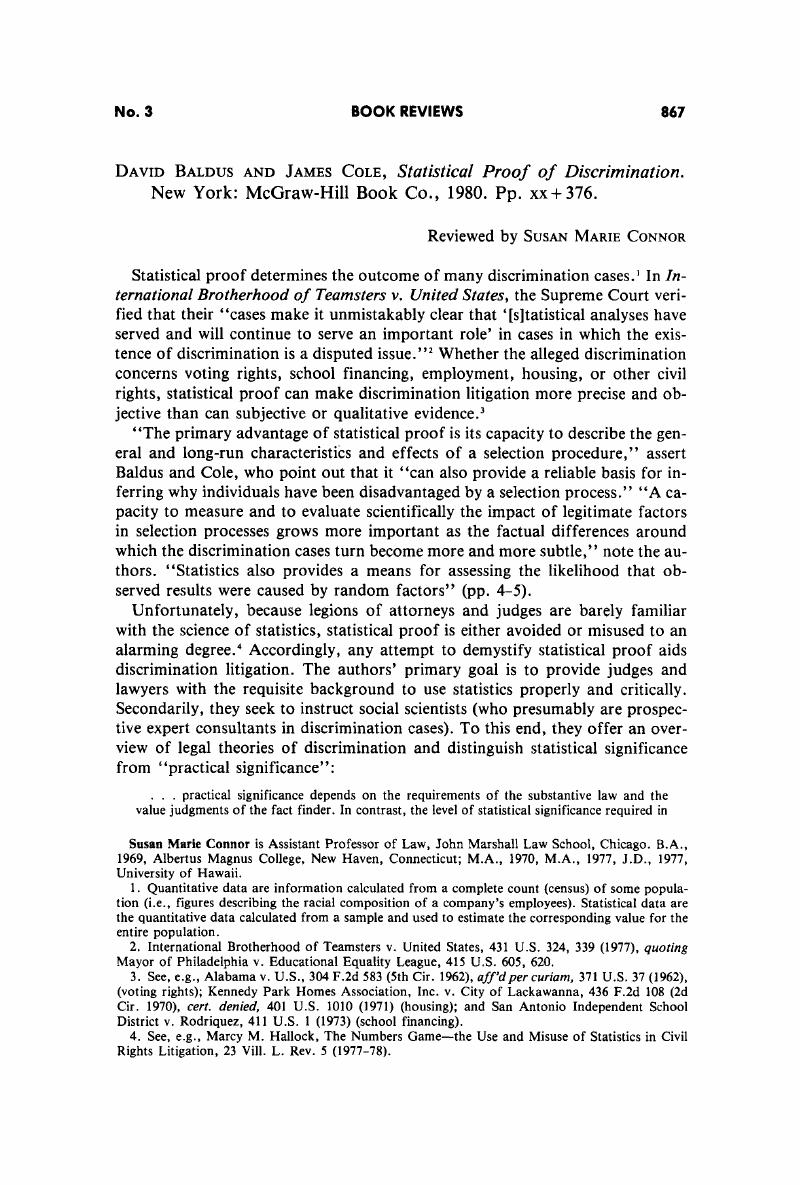No CrossRef data available.
Published online by Cambridge University Press: 20 November 2018

1. Quantitative data are information calculated from a complete count (census) of some population (i.e., figures describing the racial composition of a company's employees). Statistical data are the quantitative data calculated from a sample and used to estimate the corresponding value for the entire population.Google Scholar
2. International Brotherhood of Teamsters v. United States, 431 U.S. 324, 339 (1977), quoting Mayor of Philadelphia v. Educational Equality League, 415 U.S. 605, 620.Google Scholar
3. See, e.g., Alabama v. U.S., 304 F.2d 583 (5th Cir. 1962), aff'd per curiam, 371 U.S. 37 (1962), (voting rights); Kennedy Park Homes Association, Inc. v. City of Lackawanna, 436 F.2d 108 (2d Cir. 1970), cert, denied, 401 U.S. 1010 (1971) (housing); and San Antonio Independent School District v. Rodriquez, 411 U.S. 1 (1973) (school financing).Google Scholar
4. See, e.g., Hallock, Marcy M., The Numbers Game—the Use and Misuse of Statistics in Civil Rights Litigation, 23 Vill. L. Rev. 5 (197778).Google Scholar
5. Washington v. Davis, 426 U.S. 229 (1976).Google Scholar
6. Most particularly, see 42 U.S.C. § 2000e et seq. (1970 & Supp. V). See also in the case of facial discrimination (e.g., “no women need apply,” the plaintiff need prove only having been disadvantaged by the rule). De LaCruz v. Tormey, 582 F.2d 45, 49–50 (9th Cir. 1978).Google Scholar
7. International Brotherhood of Teamsters v. United States, 431 U.S. 324, 335 n.15 (1977).Google Scholar
8. Id. at 336.Google Scholar
9. Griggs v. Duke Power Co., 401 U.S. 424 (1971). “Adverse impact” is synonymous with “disproportionate impact,”“disparity,” and “differential impact.”.Google Scholar
10. Regarding the second distinction Baldus and Cole explain: “An exception to this rule applies under the Fourteenth Amendment where a defendant has the opportunity to justify a classification even if based on race” (p. 45 n.81).Google Scholar
11. Supra at note 5.Google Scholar
12. Castaneda v. Partida, 430 U.S. 482, 494 n.13 (1977).CrossRefGoogle Scholar
13. United States v. Ironworkers Local 86, 443 F.2d 544, 551 (9th Cir.), cert, denied, 404 U.S. 984 (1971).Google Scholar
14. The book's glossary and bibliography are worth noting. Both are quite decent reference tools. The comprehensive index is also helpful to the reader who desires clarification of a detail.Google Scholar